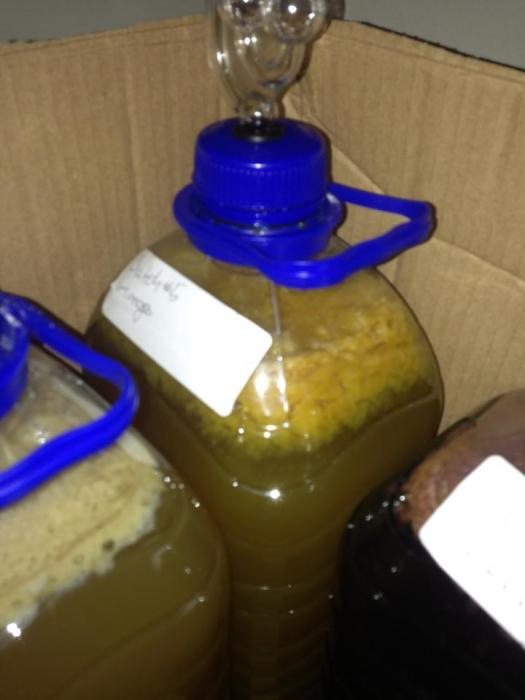TomNotMeAtSix
Member
- Joined
- Sep 4, 2013
- Messages
- 17
- Reaction score
- 0
This is the recipe I used;
1G Youngs Cider Yeast
20L Asda Apple Juice
1L Mango
1L Forest Fruits
1L Pineapple
1L CHerry
1L Raspberry and Cranberry
5x 5L Demijohns with Airlocks.
250G Caster Sugar
1tsp Yeast Nutrients Per Demijohn.
The 20L was divided as 4L in each DJ and then the 1L flavors was added (1 flavor per DJ)
The brew was all mixed up form the start, firstly I forgot to warm up the juice and forgot to pitch the yeast, I just added it to the top. This lead to a slow activation as the yeast was added to 18 degree juice.
The O.G was 1.050-1.060. (with added sugar)
After this first setback I then forgot to place water in the airlocks for the first 24 hours, once I did fill them with water they started bubbling fine.
Yesterday I woke up to find a ROTTEN egg smell coming form where they're being stored witch I found out to be the infamous 'Rhino Fart'
I went to them today to find NO bubbles in the airlock form any of them (they hadn't been slowing down just stopped) I also found a thick mush at the top of some of them. I cracked open the lids, cleanded the airlocks and stuff and had a sniff to see if Rhino was still there (it is). I checked the O.G again and all of them are down to 1.005-1.010 sort of area.
What do I do next? Step by step. From what I know I think I should re racking it all for another two weeks and then bottling (maximum removal of all sedement) but when should I do this second racking? and have I ruined it? I'm sure it was supposed to be taking longer than this? What about all this thick stuff at the top? What do I do about that?
Thanks for any help guys .
.
1G Youngs Cider Yeast
20L Asda Apple Juice
1L Mango
1L Forest Fruits
1L Pineapple
1L CHerry
1L Raspberry and Cranberry
5x 5L Demijohns with Airlocks.
250G Caster Sugar
1tsp Yeast Nutrients Per Demijohn.
The 20L was divided as 4L in each DJ and then the 1L flavors was added (1 flavor per DJ)
The brew was all mixed up form the start, firstly I forgot to warm up the juice and forgot to pitch the yeast, I just added it to the top. This lead to a slow activation as the yeast was added to 18 degree juice.
The O.G was 1.050-1.060. (with added sugar)
After this first setback I then forgot to place water in the airlocks for the first 24 hours, once I did fill them with water they started bubbling fine.
Yesterday I woke up to find a ROTTEN egg smell coming form where they're being stored witch I found out to be the infamous 'Rhino Fart'
I went to them today to find NO bubbles in the airlock form any of them (they hadn't been slowing down just stopped) I also found a thick mush at the top of some of them. I cracked open the lids, cleanded the airlocks and stuff and had a sniff to see if Rhino was still there (it is). I checked the O.G again and all of them are down to 1.005-1.010 sort of area.
What do I do next? Step by step. From what I know I think I should re racking it all for another two weeks and then bottling (maximum removal of all sedement) but when should I do this second racking? and have I ruined it? I'm sure it was supposed to be taking longer than this? What about all this thick stuff at the top? What do I do about that?
Thanks for any help guys






























![Craft A Brew - Safale S-04 Dry Yeast - Fermentis - English Ale Dry Yeast - For English and American Ales and Hard Apple Ciders - Ingredients for Home Brewing - Beer Making Supplies - [1 Pack]](https://m.media-amazon.com/images/I/41fVGNh6JfL._SL500_.jpg)



























